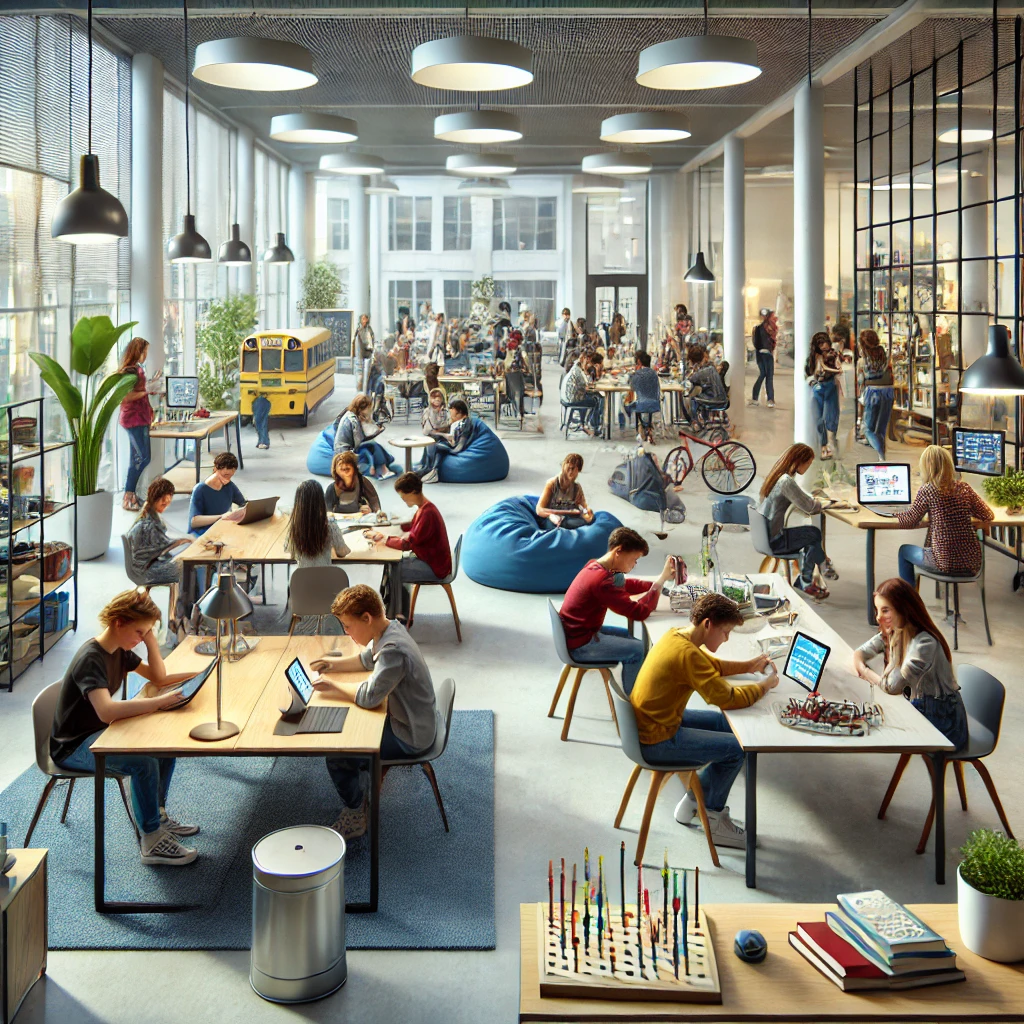
Exploring Nontraditional Learning Models for the Future of Education
The landscape of education is rapidly evolving, with nontraditional learning models emerging as key players in shaping the future. These innovative educational methods, which emphasize flexibility, personalization, and the integration of technology, are challenging the conventional classroom-based approaches. As we delve into the future of education, it's crucial to understand how these nontraditional models are not just alternatives but essential components of a more inclusive and effective educational system.
Introduction to Nontraditional Learning Models
Nontraditional learning models are educational approaches that deviate from the conventional classroom setting. They prioritize the learner's individual needs, often incorporating technology and innovative teaching methods to enhance the learning experience. These models include self-directed learning, project-based learning, online education, and hybrid models, among others.
Historically, education has been a rigid system, with standardized curricula designed to cater to the masses. However, the one-size-fits-all approach has increasingly been criticized for its inability to address the diverse needs of students. As a result, educators and innovators have sought to develop alternative methods that offer more personalized and flexible learning experiences.
Types of Nontraditional Learning Models
Self-Directed Learning
Self-directed learning empowers students to take control of their education by setting their own goals and choosing the resources that best fit their learning style. This model encourages independence and fosters critical thinking skills. One of the most successful examples of self-directed learning is the Montessori method, which allows students to learn at their own pace in a prepared environment.
Project-Based Learning
Project-based learning (PBL) is an instructional method where students learn by actively engaging in real-world and meaningful projects. This approach helps students develop problem-solving skills, creativity, and the ability to apply knowledge in practical situations. Schools that have implemented PBL, such as High Tech High in San Diego, have seen significant improvements in student engagement and achievement.
Online Education
Online education has revolutionized the way we learn, making education accessible to a global audience. Platforms like Coursera, Khan Academy, and edX offer a wide range of courses that can be accessed from anywhere at any time. This model is particularly beneficial for lifelong learners and those who require flexible learning schedules.
Hybrid Learning Models
Hybrid learning combines traditional classroom experiences with online education, offering a more flexible and personalized learning experience. This model allows students to benefit from face-to-face interactions while also taking advantage of the convenience and resources available online. Many institutions, including higher education and K-12 schools, are adopting hybrid models to cater to diverse learning needs.
Benefits and Challenges of Nontraditional Learning Models
Advantages
Flexibility: Nontraditional learning models offer unparalleled flexibility, allowing students to learn at their own pace and on their own schedule. This is particularly beneficial for students with varying learning speeds, those who need to balance education with work or other responsibilities, and those who prefer a more customized learning experience.
Personalization: These models allow for a more personalized learning experience, where education is tailored to meet the specific needs, interests, and abilities of each student. This personalization can lead to increased engagement, motivation, and ultimately, better learning outcomes.
Increased Engagement: By focusing on hands-on, real-world applications of knowledge, nontraditional learning models often lead to higher levels of student engagement. For example, project-based learning and gamification in education have been shown to make learning more interactive and enjoyable.
Challenges
Accessibility: While nontraditional learning models offer many benefits, they also present challenges, particularly in terms of accessibility. Not all students have access to the technology or resources required for online or hybrid learning. Additionally, there can be a learning curve for both students and educators in adapting to these new methods.
Need for Self-Motivation: Nontraditional learning models often require a high degree of self-motivation and discipline from students. Without the structure of a traditional classroom, some students may struggle to stay on track and complete their coursework.
Future Trends in Education
As we look to the future, it's clear that nontraditional learning models will play an increasingly important role in education. The integration of technology, the rise of artificial intelligence (AI), and the growing demand for personalized learning experiences are all driving forces behind this shift.
The Role of Technology
Technology is a critical enabler of nontraditional learning models. Adaptive learning technologies, which adjust the content and pace of learning based on individual student performance, are becoming more prevalent. These technologies, along with tools like digital badges and microlearning, are helping to create more engaging and effective learning experiences.
AI in Education
Artificial intelligence is set to revolutionize education by providing more personalized and efficient learning experiences. AI can help identify students' strengths and weaknesses, allowing for more targeted interventions. Additionally, AI-powered tools can assist educators in creating more customized lesson plans and assessments.
Integration into Mainstream Education
While nontraditional learning models are often seen as alternatives to conventional education, there is growing recognition of their potential to enhance mainstream education. Schools and universities are increasingly adopting hybrid models, project-based learning, and other innovative approaches to meet the needs of today's students. As these models continue to prove their effectiveness, they are likely to become more integrated into the broader educational landscape.
Conclusion
Nontraditional learning models are not just a trend—they represent the future of education. By offering flexibility, personalization, and increased engagement, these models are helping to create a more inclusive and effective educational system. However, as we move forward, it's essential to address the challenges of accessibility and the need for self-motivation to ensure that all students can benefit from these innovative approaches.
Educators, institutions, and policymakers must recognize the potential of nontraditional learning models and work to integrate them into mainstream education. By doing so, we can prepare students for the future, equipping them with the skills and knowledge they need to succeed in an ever-changing world.
Education

